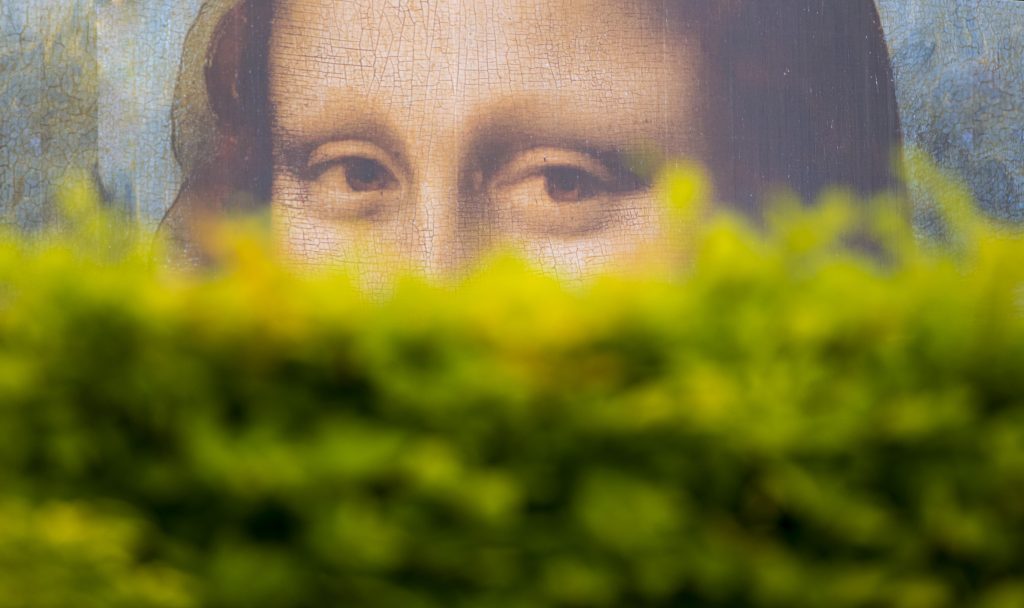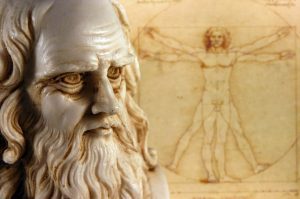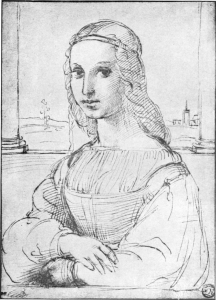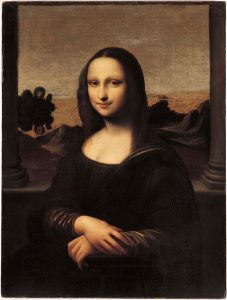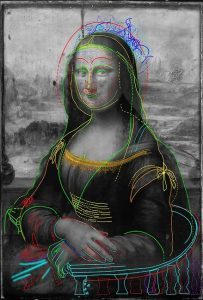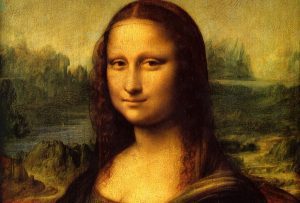The Secret behind Mona Lisa’s smile
The Mona Lisa is quite literally the most famous painting ever! Endlessly photographed, her enigmatic smile is known worldwide, yet who she was and why she was painted remains one of the most mysterious riddles in art history! Books, tour guides and culture programmes will tell you that Mona Lisa was an Italian noblewoman named Lisa Gherardini, Leonardo himself said it was for a medici prince. It would seem neither of these men received their portraits as Leonardo still had the picture when he died. New technology developed over the last decade has finally solved the mystery of the world’s most famous painting, although not necessarily who the Mona Lisa was. Should you want to discover the secrets, read on; or for a more exciting version of the tale you could watch the drama ‘Leonardo’ dramatised by Netflix.
In 1503 a Florentine merchant Francesco del Giocondo commissioned a portrait of his wife Lisa from Leonardo da Vinci, the Mona Lisa or ‘La Gioconda’ has variously been accepted as the painting in the Louvre. So where is the mystery? The description we have of this painting, seen by other artists speaking of luminous skin and well painted features like eyebrows, simply does not match the image that sits in the Louvre. In 1517, Leonardo told a friend it was a commission for Giuliano de Medici and experts almost unanimously agree that the Mona Lisa we have is Leonardo’s later work. The harder we try to discover the truth of who the woman in the Mona Lisa is, or which painting it is; the more intriguing the mystery becomes.
Leonardo da Vinci was a genius, in every way a renaissance man. Most people know of him today as a painter, best known for the Mona Lisa in the Louvre, the Last supper in Milan and his famous drawing known as Vitruvian Man. Yet Leonardo was in fact a polymath; a draughtsman, engineer, scientist, theorist, sculptor and architect. In fact, as a working artist, he was notoriously bad at finishing commissions and preferred to spend time on his drawings and engineering projects. Da Vinci invented war machines and weapons for the bloodthirsty Cesare Borgia and the Duke of Milan.
Sketch of Mona Lisa Raphael 1504
Like any good detective, we must look at the evidence which starts with Vasari – the father of art history and the chronicler of the lives of the renaissance artists. Vasari tells us that when he returned to Florence, Leonardo was commissioned to paint a portrait of Lisa Gherardini, the wife of a Florentine merchant. Vasari gives a vivid description of the painting mentioning the “rosy and pearly tints” of her face, the beautifully drawn eyebrows, nostrils and mouth. We know that Raphael saw this painting and made a sketch of it in 1504. The problem is, Raphael’s sketch doesn’t look much like our Mona Lisa in the Louvre.
Two paintings?
One answer to this conundrum is that there were two paintings. The painting that Raphael sketched showed a woman framed with columns, our Mona Lisa has no columns. Bearing in mind that the painting has never been cleaned, even with five hundred years of grime, soot and a layer of varnish applied in the late 16th century, it is hard to see the “lustre and watery sheen” in the eyes of the painting in the Louvre. There are over 12 copies of Mona Lisa today, most painted by Leonardo’s students and one other discovered to be an 18th century fake. But, locked away in a storage vault in Singapore, owned by an anonymous consortium; there is one other Mona Lisa that according to some art historians, is too good not to be by Leonardo.
‘Isleworth’ Mona Lisa
This painting is known as the ‘Isleworth’ Mona Lisa and under scrutiny it seems to be the painting described by Vasari and copied by Raphael. There are columns and she has rosy tinted cheeks and lips and finely arched eyebrows. Perhaps this is Leonardo’s painting of Lisa Gherardini? Raphael’s sketch certainly bears more resemblance to this than to the Mona Lisa hanging today in the Louvre. Maybe there were two paintings, one seen by people at the time, and the other that Leonardo kept and continued to work on.
To the trained eye the woman in the Louvre version is hugely problematic. Her pose, hair style and accessories are at odds with the norms of the time. Women were rarely portrayed looking directly at the viewer (or the artist). Noblewomen never wore their hair loose as in the Mona Lisa and the twist of fabric over one shoulder is more reminiscent of ancient Greece than Renaissance Florence.
Most recently science has brought new light on the subject, quite literally! In 2004, Pascal Cotte, a French engineer and inventor of a high-resolution, multispectral camera was invited to the Louvre to scan the Mona Lisa. With his ‘layer amplification method’ Pascal was able to reveal each layer of the painting from the original design including changes over time. Pascal has been working on those images ever since and in 2020 revealed startling results.
Scan of Mona Lisa by Pascal Cotte 2004
When the layers were peeled away, another very different figure emerged. Absolutely everything; the profile of the head, eyes, nose and placement of the hands was different. Another layer revealed a tiara and veil traditionally worn by saints and even a different hairstyle. The most exciting discovery was evidence of the spolvero method; this means Leonardo transferred the outline of his figure from an original drawing. Has that original drawing been overlooked by history?
What became clear from all of this is that the two female portraits, the original painting of Lisa Gherardini described by Vasari and seen by Raphael and the one for Giuliano de Medici could possibly be one and the same painting.
One last piece of evidence emerged from the scans that imply that the woman with the enigmatic smile may not be a real woman at all. The scans revealed a hairpin in her hair, which alongside the twisted drapery on one shoulder suggest this woman is being likened to a goddess, an idealised woman. If this painting was commissioned by Giuliano de Medici, perhaps it is a posthumous painting of his lover, Pacifica Brandano who died giving birth to his son. If so, Giuliano never received his painting either.
Perhaps who the woman behind the painting is, isn’t important. Regardless who she is, the Mona Lisa is considered the finest of Leonardo’s artworks and the pinnacle of renaissance art. What we now know is that Leonardo poured everything he had into the Mona Lisa, lovingly, obsessively, changing it over time. She represents the expression of all his knowledge and philosophy about nature, humanity and the world around us.
